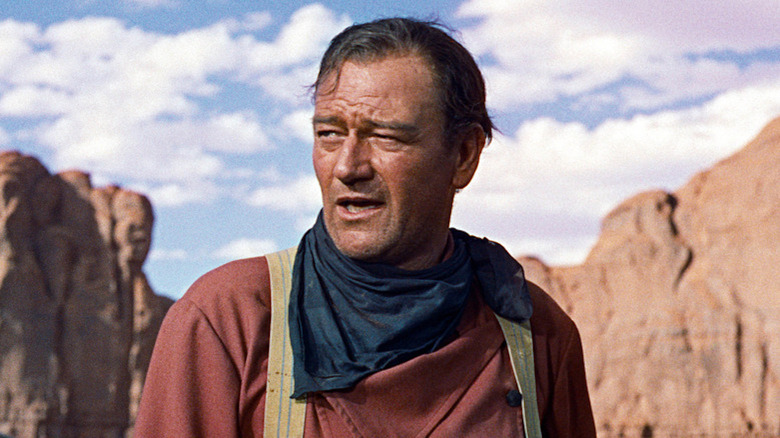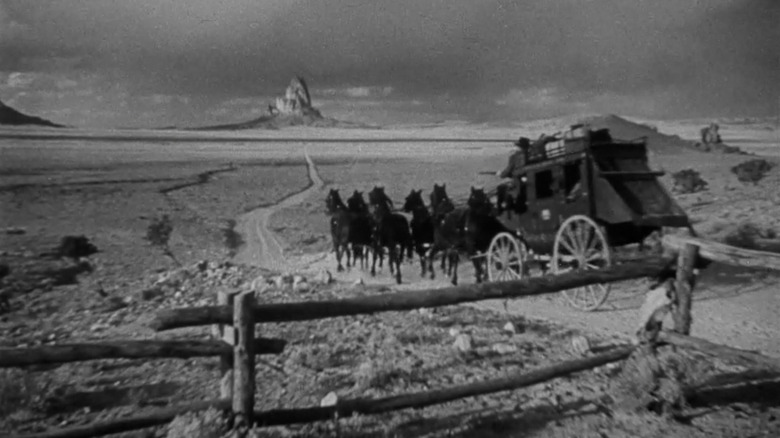John Ford's Claim Of 'Discovering' Monument Valley Didn't Sit Well With John Wayne
There isn't a more instantly identifiable movie location in the United States than Monument Valley. Situated at the Arizona-Utah border, the area provides a visually striking backdrop thanks to its series of buttes. John Ford made the valley famous via his groundbreaking Western "Stagecoach," and revisited it throughout his legendary career. Over the last 74 years, filmmakers as diverse as Stanley Kubrick, Sergio Leone, Harold Ramis, Steven Spielberg, and Michael Bay have dropped in on the ruggedly beautiful locale with everything from hominins, Chevy Chase, and Transformers. It's a cinematic sandbox every movie lover is desperate to visit. And we all have Ford to thank for this.
Or perhaps not.
One of Ford's other major discoveries was a monument of a man named John Wayne. The tall, swaggering Iowan seemed consigned to a career as a star of B-Westerns until Ford decided he was literally ready for his close-up in "Stagecoach." His portrayal of the lethally capable Ringo Kid was every bit as essential to the critical elevation of the genre as Ford's thrillingly precise direction. Wayne owed everything to Ford, and the elder artist never let him forget it.
But The Duke had no shortage of pride, so whenever he spied the opportunity to call Ford out, he seized it and squeezed it like Ringo taking up his trusty Winchester rifle. Wayne's biographer Maurice Zolotow learned this when he queried the star about Ford's discovery of Monument Valley. According to The Duke, that discovery was all his.
How petty was my valley?
In Maurice Zolotow's "Shooting Star: A Biography of John Wayne," the star claims he found Monument Valley a good decade before John Ford ever laid eyes on it. In Wayne's telling he was "proppin' and stuntin'" on a George O'Brien Western in 1929 when, in a fit of restlessness, he hopped in a car and drove around the Four Corners area of the U.S. Per The Duke:
"I went out on this Navajo reservation. It was comin' on sunset. Then I came to this valley. I parked the car and got out and looked at it and, well, you know how it looks, and that evening it looked, well, kind of like it was another world. I said to myself this would be a fine location for a Western because the cloud formations were fantastic in this area. Those two buttes — I guess they're over a thousand feet high — sure would frame a composition."
A decade later, when Ford was seeking out unfamiliar locations for "Stagecoach," Wayne recommended Monument Valley. The Duke says Ford had never heard of it. So when Wayne joined Ford and a small crew on a scouting expedition around the Utah-Arizona border, he was stunned when, upon encountering the valley, Ford boasted, "I have just found the location we are going to use."
Wayne told Zolotow he never stopped being miffed about the petty slight. "He wanted to be the one who found it. I don't know why he never wanted to give me credit for tellin' him about Monument Valley."
As for why Ford's telling of this story has endured, Wayne could take cold comfort in the most famous line of dialogue from the last classic Western he made with the director: "When the fact becomes legend, print the legend."

